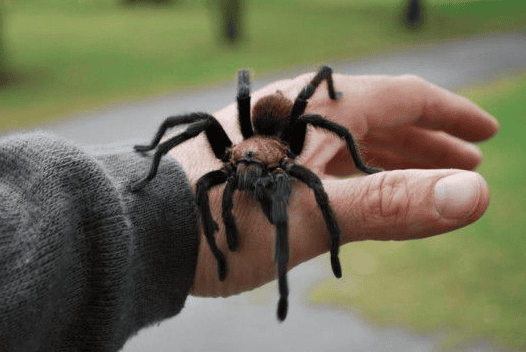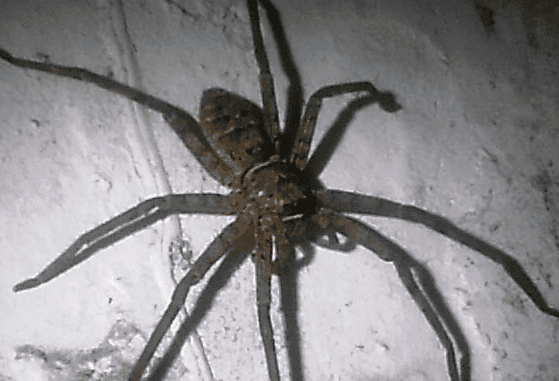"Ah, spider!"
Many people not only feel scared when they see a spider, but they even scream involuntarily. This is actually a common phobia of a specific animal - arachnophobia. About 2.7% to 6.1% of the population will be affected by this condition (scholars who study insects are also afraid of spiders).

Spider's claws
When talking about spiders, poisonous ones seem to be everyone’s first impression, and that’s exactly what they are. Although spiders are not one of the "Five Venomous" species, most of the approximately 50,000 known spider species produce some venom. Most spiders rely on venom to protect themselves and hunt. They inject venom from their venom glands into their prey through their claws, causing the prey to paralyze, dissolve or die, and then eat it.
So, are people’s fear of spiders because spiders are poisonous?
The "Misunderstood" Poisonous Spider
In fact, after the use of antivenom, the number of people who die from spider bites around the world every year is mostly in single digits. In other words, the number of people who are poisoned by spiders may not be as high as the number of people who die from accidents caused by being frightened by spiders.
Although most spiders produce venom, scientists estimate that only 0.5% of spider species are potentially dangerous to humans because most spiders’ chelicerae cannot penetrate human skin and their bites There will be only modest short-term effects. Therefore, most spiders are essentially harmless.
The wounds left after being bitten by spiders
In this case, where does people’s fear of spiders come from?
Some people speculate that human ancestors may have come into contact with dangerous spider species, and their co-evolution led to humans' negative emotions towards spiders. But in fact, this inference is unlikely, because spiders that can threaten humans are mainly distributed in Australia and South America, and are actually not common in Africa, where humans originated.
For these reasons, scientists believe that humans' fear of scorpions may be the underlying source of arachnophobia. Scorpions have a similar body structure to spiders, but unlike spiders, scorpions can pose a real threat to humans: approximately 1.5 million scorpion injuries are reported worldwide each year, resulting in approximately 2,600 deaths, while in North Africa and the Middle East are the most severely affected areas.
Turkish Black Fat-tailed Scorpion
So the researchers recruited more than 300 volunteers and showed them 62 species of insects, including spiders, scorpions, cockroaches and other insects. Live arthropods and have them rate them based on their perceptions. The results showed that scorpions, spiders and other arachnids scored highest on fear and disgust, so the scientists speculate that humans' fear of spiders may simply be triggered by a general fear of such creatures, with scorpions being the cause. The original stimulus for phobias. Of course, this conclusion is only a possible explanation for arachnophobia by scientists, but it is also an indisputable fact that people hate spiders and scorpions.
Although spider venom has a relatively limited impact on humans, the venom is very important to the spider itself. With the powerful weapon of venom, spiders have successfully conquered every continent except Antarctica. Spiders can be found from land to water, from deserts to rainforests, and even in puddles on the beach after the tide recedes. figure.
What exactly is in spider venom?
Spider venom: an extremely dangerous "cocktail"
The composition of spider venom is very complex, containing thousands of different ingredients, which is likened to "an extremely dangerous cocktail." It’s not an exaggeration. Specifically, the components in spider venom can be divided into four types: small molecules, proteins with larger molecular weights, toxin peptides rich in disulfide bonds, and antimicrobial peptides.
Among them, small molecules include serotonin, octopamine, 5-hydroxytryptamine, 5-methoxytryptamine, histamine, tyramine, γ-aminobutyric acid, aspartic acid and glutamic acid and other neurotransmitters, as well as substances such as citrates, inorganic ions and salts. The most studied of this type of small molecule substances are acyl polyamines. These polyamines were first discovered in species of the genus Arachnida and Arachnida in the 1980s. They are insecticidal neurotoxins.

Representative proteins in spider venom (Part 1) ), toxin peptides (middle) and antimicrobial peptides (below)
The importance and abundance of larger molecular weight proteins in spider venoms remains controversial, but in some spider taxa, these proteins constitute Key components of venom, such as alpha-spider toxin in black widow spider venom and phospholipase D in some other species. The antimicrobial peptides in the venom can damage eukaryotic cells by destroying the integrity of the eukaryotic cell membrane, so they are also called lytic peptides.
The most important role in spider venom is those polypeptides rich in disulfide bonds, and their molecular weight is usually less than 10kDa. These peptides can interact with ion channels or other receptors and represent the main neurotoxic components of spider venom.
Although spider venoms contain toxin peptides, and these disulfide bond-rich peptides can even account for three-quarters of the main components of spider venom, the types of peptides in different spider groups can be said to vary widely. , each with its own unique diversity. Therefore, their origin and evolution have always been a problem that has puzzled biologists.
Where does poison come from?
A recent study published in the journal eLife gives a possible answer to the above question (Reference 3). To understand where the diverse toxin peptides in spider venom come from, the researchers obtained sequence data for all spider toxin peptides generated to date to trace their evolutionary history.
The results of the study indicate that all toxin peptides that have been sequenced so far may be derived from a common ancestral peptide. This ancestral toxin was named by scientists as Adi Shakti-Hindu The Mother of the Beginning. To differentiate between different superfamilies of toxins, scientists have also named them after gods associated with death, destruction and the underworld in different cultures.
Phylogenetic tree based on spider toxin peptide sequences
According to research, scientists speculate that this ancestral toxin existed in the most recent common ancestor of modern spiders about 375 million years ago In vivo, disulfide-rich toxin peptides have subsequently diversified in different spider taxa due to different selective pressures.
Not only that, the rate of diversification of toxin peptides also varies between different spider groups: in those spider groups that rely on venom for hunting, because the "hunters" may need to continuously acquire new functions and new structures of toxins to maintain an advantage over "prey", these peptides evolve at a faster rate; in spider species that rely on venom for self-defense, toxin peptides show lower diversity due to less frequent use sex.
Of course, the origin of spider venom cannot be clarified by just one study. In fact, not only spider venom, but where their venom glands come from is also an open question.
In previous research, some scientists believed that the venom glands of spiders may originate from salivary glands, similar to ticks. Ticks and spiders have the most recent common ancestor, so the venom glands of spiders may be evolved salivary glands. . Other scientists believe that spider venom glands may also originate from ancient silk-producing glands, because in some species of sea spiders, the chelicerae of their larvae have secretory silk glands. But due to a lack of relevant evidence, scientists are not sure which of the two hypotheses is more reliable.
Two hypotheses for the origin of spider venom glands: the salivary gland origin hypothesis (left) and the silk-producing gland origin hypothesis
To address this issue, a recent study based on genome and transcriptome data Research suggests that spider venom glands are more likely to have originated from ancient silk-producing glands.
The researchers obtained genome and transcriptome data from different species including spiders, scorpions, ticks, mites, centipedes, and some insects. Through analysis, they identified genes with strong functional correlation with venom glands. Gene. Furthermore, they compared the similarities in molecular characteristics between spider venom glands and other glandular tissues and found that spider venom glands are less similar to salivary glands than to silk glands in terms of transcriptional regulation. Therefore, researchers speculate that spider venom glands may have independently originated from ancient silk-producing glands. However, the sampling for this study needs to be further improved, and a more comprehensive study is needed on the origin of spider venom glands.

 扫一扫微信交流
扫一扫微信交流
发布评论